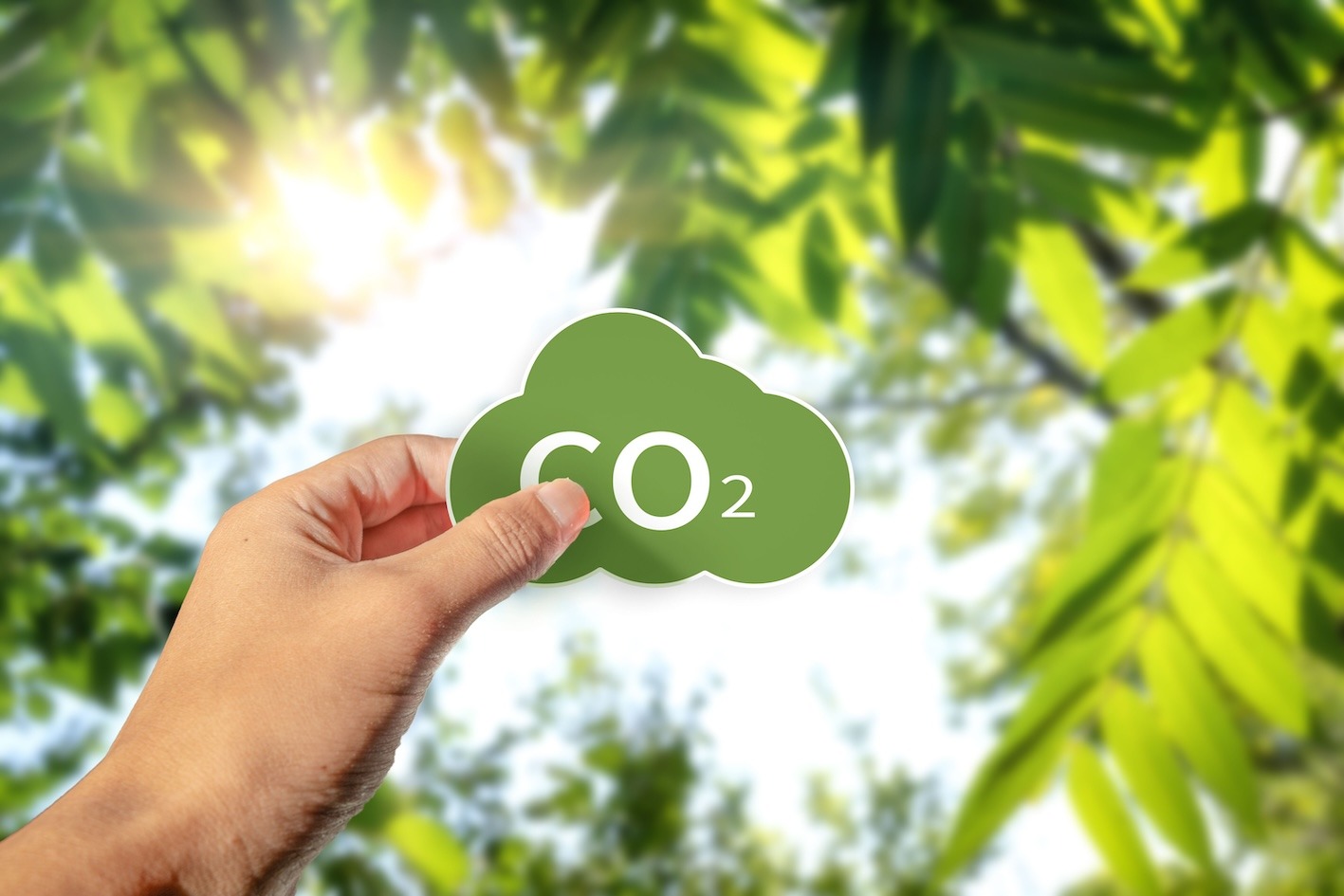Voluntary carbon contribution: stakes, mechanism, and pricing
France has set a target to reduce its greenhouse gas emissions by 40% between 1990 and 2030, with the ultimate goal of achieving carbon neutrality by 2050. To this end, a key instrument in the strategy to combat climate change has emerged: voluntary carbon contribution (or climate contributions).
This article will explore the origins of the voluntary carbon market and explain its operational framework.
Understanding Voluntary Carbon Contribution
Climate contribution is defined by the action of a financer (businesses, local authorities, individuals, etc.) in supporting projects for the avoidance or sequestration of greenhouse gas emissions (expressed in CO2 equivalent) beyond their value chain.
This action contributes to the goal of achieving net-zero emissions (or carbon neutrality) established by the Paris Agreement, which came into effect in 2016, aiming to limit global warming to 1.5°C compared to pre-industrial levels. As a reminder, carbon neutrality is reached when there is a balance between global emissions and global absorption of greenhouse gases (GHGs). This balance is crucial because the concentration of these gases in the atmosphere, beyond planetary boundaries, is directly linked to the rapid rise in temperatures.
Voluntary carbon contribution should not be confused with compliance carbon offsets. As their names suggest, the first is undertaken voluntarily, while the latter is regulated. To this end, two markets coexist: the Voluntary Carbon Market and the Regulated Carbon Market.
- The Regulated Carbon Market, created following the 1997 Kyoto Protocol, sets a cap on the amount of CO2 equivalent that the most polluting companies in signatory countries may emit. These quantities are called "carbon allowances."
Companies subject to the system can buy or sell allowances, creating a market incentive for major emitters to reduce their emissions, as heavy fines are imposed on companies that exceed the annual pollution thresholds. - The Voluntary Carbon Market developed in parallel with the Compliance Market. It allows entities whose activities emit greenhouse gas emissions to contribute to avoidance and/or sequestration projects by voluntarily purchasing carbon credits. These acquisitions are not the result of regulatory obligations, but rather reflect a commitment to the environment.
To further explore this topic, we invite you to read our article: Voluntary Carbon Market vs. Regulated Carbon Market: key differences.
Climate contributions include various actors who interact within the Voluntary Carbon Market.
- On one side, project developers (companies, organizations, or individuals) design, develop, and implement greenhouse gas avoidance and/or sequestration projects to generate certified carbon credits on the voluntary market.
- On the other side, financers provide funding either by investing upfront in project development or by purchasing carbon credits to help achieve their organization’s climate goals.
- Project developers and financers may go through intermediaries, such as ClimateSeed, which ensure the quality and credibility of the proposed projects and carbon credits, promote the projects, and provide platforms for intermediation between the two parties.
Climate contribution is a process in three steps:
- Step 1: carbon footprint assessment
- Step 2: actions implementation to reduce its GHG emissions
- Step 3: voluntary carbon contribution

Calculating CO2 Emissions
Before embarking on a voluntary carbon contribution,, it is necessary to calculate its own CO2 emissions. As ADEME (French Environment and Energy Management Agency) states, “the priority for an organization remains, first and foremost, the drastic reduction of its own direct and indirect emissions, whether fossil-fuel-based or from living materials, before increasing carbon sequestration sinks.” Given the evolving and demanding regulations (such as CSRD, CDP, European Taxonomy, etc.), compliance has become a major strategic issue for organizations, requiring anticipation, rigor, and continuous adaptation.
To explore this topic further, we invite you to read our article: The Evolution of the CDP (Carbon Disclosure Agreement)
Developing a carbon inventory starts with defining the organizational scope of the legal entity and its operational scope, which covers all greenhouse gas (GHG) emissions associated with its activities over a full year. These emissions are classified into three categories, known as scopes:
- Scope 1: GHG emissions directly emitted by the company’s activities;
- Scope 2: Indirect GHG emissions associated with energy consumption (electricity, steam, heat);
- Scope 3: Indirect GHG emissions that are not directly controlled by the company. These typically refer to upstream and downstream activities in the value chain.
Several methods and tools are available to accurately calculate its carbon footprint. Among them, the Bilan GES offered by ADEME, which is mandatory for certain French companies, local authorities, and public institutions, is a recognized method that relies on the Base Carbone® to convert activity data into GHG emissions expressed in kilograms or tonnes of CO2 equivalent.
At the international level, the GHG Protocol, developed by the World Business Council for Sustainable Development (WBCSD) and the World Resources Institute (WRI), also provides a framework for measuring, accounting for, and managing GHG emissions.
Furthermore, several carbon accounting software solutions offer advanced features: data collection, identification of emission sources, and tracking over time. At ClimateSeed, we support our customers in measuring and reducing their carbon footprint.
Ultimately, calculating CO2e emissions enables organizations to identify their residual emissions and estimate the volume of carbon credits needed to account for them.
Selecting an Emission Reduction Project
Emission reduction projects are grouped into two main categories:
- Sequestration projects aim to capture and eliminate carbon already present in the atmosphere. This includes nature-based solutions like reforestation, afforestation, revegetation, agroforestry, and other more technological approaches.
- Avoidance projects focus on preventing the release of future carbon emissions into the atmosphere. This includes renewable energy, forest conservation, and the distribution of more efficient household devices, such as improved cookstoves.
These projects generate carbon credits calculated as follows: 1 carbon credit corresponds to 1 tonne of CO2 equivalent.
Project types are diverse, each with their own specificities and advantages.
It is important to note that every project type is just as crucial and plays an essential role in the array of climate solutions. At ClimateSeed, we do not prioritize one approach over the other, as we consider both approaches equally important and complementary.
To ensure the quality and integrity of carbon credits generated by emission reduction projects, the following five criteria must be met:
- Additionality: The avoidance or sequestration of GHGs would not have occurred without the funding generated by the sale of the carbon credits.
- Measurability: Recognized methodologies based on the latest scientific studies must be used to measure and track the GHG emissions absorbed or sequestered.
- Permanence: The positive impact of the projects must be permanent and sustained over time. Risks related to permanence, such as fire hazards, must be accounted for.
- Uniqueness: Double counting must be avoided. Each carbon credit can only be used and accounted for once.
- Transparency and Verifiability: Emission reduction projects must provide transparent information, accessible to the public, and subject to verification by independent third parties.
Additionally, recognized standards at the national or international level have been developed, certifying the quality of voluntary contribution projects and guaranteeing their environmental added value. The two main international standards are:
- Gold Standard: Created by WWF, this standard places a strong emphasis on co-benefits related to sustainable development, ensuring that projects contribute not only to emission reductions, but also to the well-being of local communities and the Sustainable Development Goals (SDGs).
- Verra’s Verified Carbon Standard (VCS): The most widely used standard worldwide, recognized for its rigor in validating and verifying emission avoidance or sequestration projects, covering a wide range of sectors, such as forestry, renewable energy, and agriculture.
Many other standards have emerged in the voluntary carbon market, each addressing specific needs in terms of project typologies, methodological rigor, or social and environmental co-benefits, reflecting the diversity and ever-evolving nature of this growing market. Notable examples include:
- Plan Vivo: Established in 1994, this standard is one of the oldest in the market and primarily certifies agroforestry, reforestation, sustainable land management, and ecosystem conservation projects. It is distinguished by its focus on local communities.
- Low Carbon Label (Label Bas Carbone): Launched in France in 2019 by the Ministry of Ecological Transition, it particularly encourages projects in the agriculture, forestry, and land conservation sectors. Like other national labels, it typically represents a higher quality and localized impact.
To explore this topic further, we invite you to read our article: The Role of the Standards in the Voluntary Carbon Market.
The selection of emission reduction projects is determined based on the desired project type, the type of carbon credits generated, the standards awarded, the quality of the carbon credits, but also the geographical area and the co-benefits of the project, which may be economic, social, and/or environmental.
Acquiring Carbon Credits
The volume of credits to purchase is determined by two approaches: the amount you wish to invest in your climate strategy or the quantity of emissions you want to account for, which will define the number of carbon credits to buy.
Now, the next question arises: How can we buy carbon credits?
The purchase of carbon credits can be done through different channels depending on the type of buyer, their level of commitment, and the desired project. A project developer can either sell their carbon credits directly or go through intermediaries, such as ClimateSeed, which offer portfolios of certified projects with measurable impacts.
Once the projects you wish to contribute to are selected, there are several financing options:
- A spot payment, which consists of a one-time purchase to buy a certain number of credits in a single transaction.
- Multi-year agreement, which consists of a multi-year commitment involving an agreement to finance a defined (or progressive) volume of carbon credits over several years, often through an annual commitment or partnership agreement.
- Rather than buying already generated credits, some actors choose to finance a carbon project directly from its conception or implementation phase in exchange for credits that will be generated in the future. This is known as project financing or co-financing.
Finally, after the purchase is made, the buyer receives a carbon credit retirement certificate confirming the credit retirement, which includes the following information:
- Date of retirement
- Project selected (name and location)
- Quantity of retired carbon credits (in tCO2e)
- Retirement purpose
- Using entity
- Serial numbers retired
- Credit standard (VCS, Gold Standard, Plan Vivo, etc.)
Price and Influencing Factors
The price of a carbon credit is not fixed and varies according to several factors:
- Supply and demand
- Type of project
- Project size
- Geographical location
- Certification type
- Initial financing costs to set up the project
- Co-benefits associated with the project
- Involved stakeholders
- Intermediation costs
Prices can range from €2 to over €100 per ton. The Low Carbon Label standard, meanwhile, has a significantly higher average price, reaching €32.9 per ton of CO2 equivalent in 2022.
Market and Key Actors
According to the data from the 2025 Ecosystem Marketplace report, the global size of the Voluntary Carbon Market was valued at $535.1 million in 2024. Despite a 29% decline in market value compared to 2020, estimates predict a 25% rebound between 2025 and 2034. This highlights the growing commitment of businesses, local authorities, and individuals to sustainable development and net-zero goals.
Credits from forest management and land use projects, as well as projects related to household and community devices, are the most popular. However, there has been a decrease in interest for credits from renewable energy projects and REDD+ projects, mainly due to concerns about their quality.
The market is driven by a variety of actors ensuring credibility, reliability, and traceability.
On the one hand, public actors, such as ADEME in France or the European Commission, play a role in setting frameworks and providing methodological support. ADEME, for instance, launched and oversees the Low Carbon Label (Label Bas Carbone), which certifies national contribution projects and guarantees their environmental integrity.
On the other hand, private actors play diverse roles, including environmental NGOs (Gold Standard or VCS) that develop rigorous certification standards, carbon funds that finance or aggregate projects, and numerous companies actively participating in the market through purchasing credits or directly financing projects.
Registries such as those from Verra or Gold Standard ensure traceability and transparency of credits. Each credit is recorded with a unique number, allowing its lifecycle to be tracked (issuance, sale, withdrawal).
Issues, Benefits, and Limitations
As mentioned at the beginning of this article, voluntarily purchasing carbon credits allows active participation in the fight against climate change by supporting projects focused on sequestration or the avoidance of greenhouse gas emissions.
Depending on the project typologies, these actions can also generate environmental co-benefits, such as biodiversity preservation, combating deforestation, protecting oceans, or preventing soil erosion.
Beyond the environmental aspect, the economic and social impacts on local communities are crucial. Many projects contribute to improving living conditions in underdeveloped, isolated regions with limited resources through initiatives such as installing improved cookstoves or water filters in households, creating jobs, and preserving territories.
While voluntary carbon contribution has many advantages, it also raises limitations and issues that must be identified. In recent years, various controversies regarding the actual value of some credits or the effectiveness of certain projects have sparked media scandals. These incidents highlight the need to strengthen the reliability and credibility of the market through rigorous control of carbon credits offered for sale, as well as the need to educate the public and raise awareness among stakeholders about the real issues of carbon contribution.
This is why it is key to work with intermediaries such as ClimateSeed, who ensure the quality, credibility, and robustness of the proposed projects and carbon credits, thereby minimizing risks and maximizing positive impact.
Best Practices & Recommendations to finance carbon contribution projects
In conclusion, it is important to note that carbon credits are a complementary tool, but the priority should always be to reduce its own greenhouse gas emissions related to its value chain. Creating and publishing a carbon footprint is, therefore, a crucial first step to measure emissions and initiate a comprehensive environmental strategy.
Next, it is essential to verify the transparency and traceability of emission reduction projects. To do this, it is recommended to choose projects with certifications that guarantee greater reliability and compliance with carbon contribution criteria as well as working with trustworthy intermediaries.
We also recommend prioritizing projects that deliver a range of co-benefits, such as enhancing local biodiversity and improving community livelihoods, in addition to reducing emissions. Likewise, supporting both local and international projects is essential to supporting the least developed countries in their fight against climate change.
Finally, communicating your commitment in a transparent and appropriate manner, avoiding any form of greenwashing, is a key step in reinforcing the credibility and impact of your actions.
Q&A
It is the mechanism by which any actor (individual, company) voluntarily finances projects that reduce or sequester CO₂ emissions in order to offset their own emissions.
After estimating your emissions in tonnes of CO₂, multiply this volume by the average price of one offset tonne (around €25–30 depending on the project).
Voluntary credits are purchased freely by choice; mandatory credits are part of a binding regulatory framework that imposes emission caps or quotas.
Make sure it is certified (Gold Standard, VCS), that it meets additionality criteria, and that it is subject to independent audits.
In 2024, the average price on the voluntary market generally ranges between €8 and €35 per tonne, depending on the nature and location of the project.
Share this
You May Also Like
These Related Stories

Comparing Voluntary and Regulated Carbon Markets
.jpg?width=4928&height=3264&name=sun-shining-in-rain-drops-alt-sunset-in-nature-2022-02-02-03-49-48-utc%20(1).jpg)
Why do Carbon Project Portfolios Enhance your Climate Contribution?


